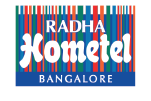Coromandel Coast – A journey through our plates of seafood
The Coromandel Coast extends from Tamil Nadu to parts of Andhra Pradesh. Being a region bordering the Bay of Bengal, its cuisine and culture go back centuries. The geographical location of the Coromandel Coast has influenced Coromandelites’ lives, occupations, and diets, and seafood dishes stand as the food hub for seafood dishes.
What makes Coromandel Seafood Unique?
When it comes to the seafood platter of the Coromandel coast area, they have a network of rich fishing villages, coasts, and estuaries which are full of marine life. The waters of the Bay of Bengal are called tropical and teem, and they contain nutrients and practical marines suitable for different fish species, crustaceous and molluscan. That’s also true for the other seafood they offer, from tiger prawns and mud crabs to kingfish and sardines – the seafood caught here is often fresh, full-flavoured, and unique. What distinguishes the Coromandel seafood platter is the combination of ocean flavours, cooking methods, and the history of each recipe closely linked to it.
Thus, the rich and brave history of the Indian coastline and its seafood dishes has integrated a range of exotic flavours left behind by the Cholas, the Malabars, the Dutch, the Portuguese, the French, and the British empires. Informatively, then, the seafood dishes of the region comprise a complex process of the assimilation of Tamil Tamil, Telugu, and Anglo-Indian cooking traditions. In the use of tamarind, curry leaves, coconut, and, to some extent, spices such as coriander, fenugreek, and mustard seeds, Coromandel has remained close to its root
The Flavors of Tradition: Signature Dishes from the Coromandel Coast
Well, let’s explore some of the mouth-watering seafood dishes and delicacies of the Coromandel Coast:
Meen Kuzhambu
Meen Kuzhambu is a spicy fish curry preparation that is a part of most coastal Tamil Nadu households. The fish is cooked with a gravy that has tamarind, tomato, and spices; it is slow-cooked, so the fish retains the tangy and spicy taste of the gravy. One of the best things about this dish is the tardiness of the sauce due to the tamarind and the spiciness of the red chillies with steamed rice. The fish used in the preparation is usually the locally available fish, such as seer fish, mackerel, or catfish.
Chepala Pulusu
Chepala Pulusu is a fish curry from Andhra Pradesh, India. It is flavoursome and is prepared slowly with a hint of spice and tang. This delicacy is prepared with tamarind pulp, onions, garlic, and a piquant spice blend. The fish is returned to the stew and cooked at a very slow boil so that the ingredients blend with little accompaniment from a utensil. This dish is preferably prepared with freshwater fish, but almost any fish will do. The dish is best served sizzling hot, accompanied by rice and a pat of ghee. The fish does not harden by slow cooking, while the gravy is rich and has an excellent throat-closing taste.
Prawn Thokku
Crab Masala
For crab aficionados, the Coromandel style of crab masala is a culinary delight. This dish features freshly-acquired crabs, blended with a medley of onions, newly-gathered tomatoes, ginger, garlic, and a variety of warm spices. The unique blend of whole fennel, black peppercorn, and fresh coriander leaves enhances the flavour and adds a distinct aroma to the dish. The process of cracking open the shells to savour the mud crabs’ meat adds to this dish’s unique experience.
Karuvadu Thokku
This is a dry fish curry dish S became deeply engaged in preparing, contentedly explaining how each additive moulded the recipe’s taste.
To many Tamil households on the Coromandel Coast, the preservation process for fish, known as karuvadu (dry fish), is irreplaceable. Fish drying is as old as civilization, and it would be unbelievable to imagine the coastal community without this practice. Firstly, the dried fish is washed and soaked for some time and then fried or boiled in a spiced gravy of masala, which is spicy and sour. In this recipe, the dried fish has a very intense umami taste, complemented by the sourness of tamarind and the chillies’ spiciness. Often eaten with hot rice, this is now a popular dish enjoyed by many who appreciate it as a home-cooked meal for the area, showing people’s creativity in using what they have.
Culinary Techniques: Overview of the Art of Coastal Cooking
The cooking techniques in this area are almost as numerous as the seafood species on the Coromandel Coast of India.
Most seafood dishes prepared along the coast are cooked using simple, straightforward methods that do not involve complex techniques or ingredients that mask the taste and flavor of the fish or the seafood. These techniques include stir-frying which is quick and easy, steaming, and slow cooking such as simmering. A popular spice that is used in the making of these dishes is Tamarind, and you will find many coastal dishes added in a blend of a tamarind flavour.
Seafood Culture and Sustainability
It is rather ironic that while people of the Coromandel Coast may eat fish, the connection between them and the sea runs far beyond food and gastronomy – it is cultural, symbolic, and mystical. This is a cultural practice throughout the region since many people rely on fishing for livelihood, with most activities handed down from generation to generation. Catamarans and small boats are still practised in many villages, focusing on ecologically friendly fishing and catching sea products. The people appreciate the sea and understand the need to conserve marine resources, preserving their cultural heritage with the utmost respect.
The age has been short, but modern fishing technologies, pollution disturbing the balance of the ocean, and climate changes have started to challenge the stability of the sea. Measures being taken by the local groups and also from the government side are being implemented to sustain the fishing practices for Coromandel Coast seafood lovers so that the taste of seafood does not fade away for future generations.
The Seaside Feast: Snacks of a Culinary Sort
Without mentioning the various varieties of seafood and restaurants the Coromandel Coast has to offer, one cannot have a conversation about it. Good seafood can be found at pavement cafés, roadside eateries, restaurants, and coastal cruises; fresh catch of the day is available from Chennai to Pondicherry to Visakhapatnam. Fish, prawns, and crabs are all displayed in mouthwatering ways at the marketplaces, where fishermen equitably sell their fresh catch.
There’s a varied seafood buffet can be found all across the beaches. A variety of seafood options are available at barbecue stands, such as grilled prawns, spicy fried fish, mangoes, and avocados topped with beach spices and lime. In addition to classic seafood dishes, the area is known for its fusion seafood offerings, which are the result of chefs combining traditional and continental recipes to create Coromandel’s most recent iteration of cutting-edge hybrid seafood delicacies.
Sangamam
Do you yearn for a genuine seafood meal infused with Thamizh Nadu’s rich history? Take advantage of the delicacies of Sangamam, the exquisite cuisine festival, by visiting Feathers Hotel Chennai. The carefully chosen Karikalan Virundhu menu, which features a wide range of seafood specialties that genuinely honor Thamizh Nadu’s culinary heritage, is not to be missed.
In summary
The rich history, culture, and customs of the Coromandel coast are reflected in the region’s seafood delicacies, which are much more than just cuisine. Every dish relates a tale of the land and the sea, of the centuries-old villages that have flourished along this coast, and of a culinary legacy that has changed throughout time without losing sight of its origins.
Frequently asked questions
1. What distinguishes seafood from the Coromandel Coast from that of other areas?
Seafood from the Coromandel Coast is known for its freshness, a wide variety of marine life, and a special fusion of flavors resulting from centuries-old traditional cooking techniques inspired by many civilizations.
2. Which Coromandel Coast seafood dishes are in style?
Popular seafood dishes that offer a unique taste of the region’s culinary heritage are Meen Kuzhambu, Chepala Pulusu, Prawn Thokku, Crab Masala, and Karuvadu Thokku.
3. Which special elements are used in seafood meals from the Coromandel Coast?
Tamarind, curry leaves, coconut, red chili powder, turmeric, and spices like coriander, fenugreek, and mustard seeds are typical components that give the food depth and richness.
4. Which Coromandel Coast locations are a must-see for seafood lovers?
From Chennai to Visakhapatnam, the coast is lined with pavement cafés, roadside diners, restaurants, and market stalls serving a diverse array of seafood delicacies to suit every palate.
5. Does the seafood cuisine of the Coromandel Coast reflect any contemporary influences?
Yes, even while classic recipes are still well-liked, fusion cuisine—which combines classic Coromandel flavors with continental influences to create cutting-edge hybrid seafood delicacies—is becoming more and more popular.
know more about our services

Restaurants
Spa
Banquet hall
Tea Lounge
Restobars
conveniently located
Perfectly located for business, medical, and leisure needs, the hotel offers unmatched accessibility. Just 8 km from Chennai International Airport and 1 km from the Chennai Trade Centre, it ensures convenience for travelers and event attendees alike.
It’s minutes away from major tech parks like DLF, Commerzone, and Keppel, and sits right across from MIOT International Hospital. Several renowned educational institutions, including SRM Ramapuram Campus, Easwari Engineering College, Sri Ramachandra Medical College, and the Saveetha Group of Colleges, are also within easy reach.
With this prime location, guests enjoy the perfect blend of convenience, accessibility, and comfort.
conveniently located
Perfectly located for business, medical, and leisure needs, the hotel offers unmatched accessibility. Just 8 km from Chennai International Airport and 1 km from the Chennai Trade Centre, it ensures convenience for travelers and event attendees alike.
It’s minutes away from major tech parks like DLF, Commerzone, and Keppel, and sits right across from MIOT International Hospital. Several renowned educational institutions, including SRM Ramapuram Campus, Easwari Engineering College, Sri Ramachandra Medical College, and the Saveetha Group of Colleges, are also within easy reach.
With this prime location, guests enjoy the perfect blend of convenience, accessibility, and comfort.
connect with us
FAX
+91 44667 76900
info@feathershotels.com
ADDRESS
4/129, Mount Poonamallee Road, Manappakkam,
Chennai - 600089.





